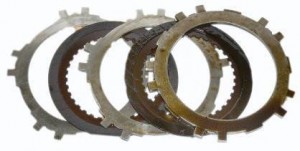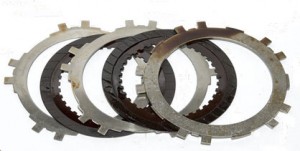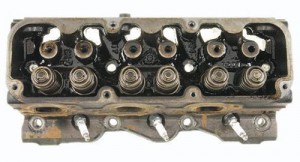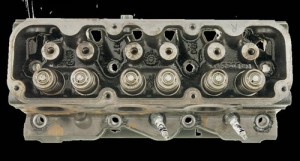Amsoil Engine Flush
Family Handyman magazine
Family Handyman Magazine had a short tip on the 4 Big Synthetic Oil Myths. www.familyhandyman.com
The big four myths listed were;
- You have to flush the engine before you can run synthetic oil in it. FALSE. You should NEVER flush your engine. All carmakers warn against this practice. (editorial comment; this is the one reaction we disagree with)
- Synthetic oil causes leaks. FALSE. This was true 25 years ago. Not anymore. Current formulations contain seal conditioners to prevent leaks.
- Once you switch to synthetic, you can’t go back to regular oil. FALSE. No truth whatsoever to this one.
- Since synthetic oil flows better when cold, I can ignore the manufacturer’s recommendations for 5W- 20 and use 10W-30. FALSE. Heavier weight oil reduces fuel efficiency and can mess up valve timing mechanisms. Stick with the manufacturer’s oil weight recommendations.
Amsoil Engine Flush
In general, Family Handyman gets it straight on these tips. These have each been a long standing myth so it’s good to get a major magazine to clear the air. We agree with their reaction to tips 2,3, and 4.
Engine Flush
Amsoil has sold an engine flush product for years. In many cases, it’s not needed. However, in certain cases it’s a proper product to use to transition a car to synthetic oil. It’s been used in thousands of vehicles by thousands of Amsoil customers with no issues.
Amsoil Engine Flush
Amsoil Engine Flush AMSOIL Engine and Transmission Flush (FLSH) helps restore fuel economy, increase operating efficiency and reduce emissions in gasoline and diesel engines, and automatic transmissions. Its potent, detergent-based formula cleans sludge and deposit build-up, promoting lower operating temperatures and reduced oil consumption. AMSOIL Engine and Transmission Flush is safe on parts and can be easily disposed of with waste oil. Amsoil Engine Flush
Restores Vehicles to Like-New
New engines and transmissions run more efficiently, but over time they gather harmful deposits that cause power and performance loss. Stop-and-go driving, prolonged idling, short trips that do not allow the engine to reach full operating temperature, towing, the ingestion of airborne dirt, fuel dilution, water condensation and oxidized oil all can promote sludge build-up in motor oil and transmission fluid. As it settles, sludge clogs narrow oil passages, restricting oil flow to vital parts, especially the upper valve train area. Amsoil Engine Flush
In transmissions, deposits can form on clutch plates, causing hesitation and erratic shifting. Ultimately clutch glazing can set in, reducing the life of the transmission. Deposits in engines and transmissions can accelerate wear, causing power loss and increased fuel consumption. Amsoil Engine Flush
• Cleans engines and transmissions for improved efficiency, fuel economy and lower emissions
• Prolongs equipment life
• Detergent-based formula more environmentally friendly
• Compatible with seals and gaskets
• One-treatment results
• Easily disposed of with waste oil
Installing new oil or transmission fluid into a dirty vehicle may not be enough to remove deposits and increase efficiency. The detergents and dispersants in some lubricants may not be able to handle leftover sludge and deposits, and the new lubricant soon becomes unfit for service, accelerating the formation of even more harmful deposits. Amsoil Engine Flush
AMSOIL Engine and Transmission Flush Benefits
Unlike many flush products, AMSOIL Engine and Transmission Flush features a multi-use formulation that dissolves and disperses sludge, varnish and deposits in both engines and automatic transmissions. Due to its detergent-based formulation, used AMSOIL FLSH can be easily disposed of with waste oil, making it more user-friendly. Its advanced formula of light base oil technology, powerful detergents and dispersants provides safe cleaning action. AMSOIL FLSH is compatible with both petroleum and synthetic oils, preparing poorly maintained equipment for installation of new oil. It represents the first step toward restoring neglected equipment to top-notch performance. AMSOIL Engine and Transmission Flush provides the following benefits in only one treatment:
Gasoline and Diesel Engines
• Helps loosen sticky valves and rings, minimizing blow-by and reducing emissions
• Helps quiet lifter noise
• Promotes lower operating temperatures through sludge removal
• Easy disposal
Automatic Transmissions
• Cleans deposits in oil cooler and ports
• Helps unclog fluid passages
• Cleans deposits and varnish from clutch plates, helping improve efficiency
• Promotes smoother operation and transmission life through reduced shift delay
Applications
AMSOIL Engine and Transmission Flush is recommended for diesel and gasoline engines, and automatic transmissions. It is not recommended for CVT transmissions or differentials.
Directions for Use
Though it works in one treatment, AMSOIL Engine and Transmission Flush is safe enough to be used at every oil change. If using a flushing machine, follow the manufacturer’s recommendation. Otherwise, use the following guidelines:
Engine: Add 16 oz. bottle of AMSOIL Engine and Transmission Flush to engine oil fill port. Idle the engine for 10-15 minutes, then immediately drain the oil. Ensure enough time for the system to completely
drain. Remove and replace the engine oil filter. Refill engine with new engine oil in the viscosity grade recommended by the manufacturer.
Transmission: Engage emergency brake. Add 16 oz. bottle of AMSOIL Engine Flush to transmission oil fill port. Idle for 10-15 minutes; shift through drive and reverse. Do NOT place vehicle under heavy load. Drain entire transmission and torque converter of fluid. FILTER MUST BE CHANGED prior to refilling with new transmission fluid.
NOTE: It is not recommended to flush transmissions that do not have a removable pan or access to the transmission filter.
(above) Automatic transmission clutch plates pre-cleanup. Varnish and glazing is heavy on some of the plates.
(above) Automatic transmission clutch plates after cleanup with AMSOIL Engine Flush reveal lighter glazing and varnish.
(above) Cylinder head pre-cleanup. Note the sludge deposits on and around the valve springs and push rod openings.
(above) Cylinder head after cleanup with AMSOIL Engine Flush. The valve springs and push rod openings are noticeably cleaner, with fewer sludge deposits. The manufacturer’s stamping is more easily seen.
http://www.syntheticoilhq.com
WordPress Tags: Handyman,Magazine,Synthetic,Myths,engine,FALSE,editorial,reaction,Current,Once,truth,manufacturer,Heavier,efficiency,valve,Stick,tips,myth,Flush,Amsoil,product,cases,transition,customers,Transmission,FLSH,gasoline,formula,sludge,consumption,performance,Stop,temperature,ingestion,dirt,dilution,condensation,area,plates,hesitation,life,equipment,Detergent,Compatible,treatment,results,vehicle,lubricant,formation,Benefits,products,features,user,technology,action,petroleum,installation,Diesel,Engines,rings,lifter,noise,removal,Easy,disposal,Automatic,operation,Directions,Though,machine,recommendation,Otherwise,guidelines,bottle,port,Idle,Ensure,system,Remove,Refill,Engage,emergency,Drain,FILTER,NOTE,cleanup,Varnish,Cylinder,recommendations,mechanisms,vehicles,emissions,transmissions,temperatures,ports,differentials,thousands,detergents,dispersants,formulation







